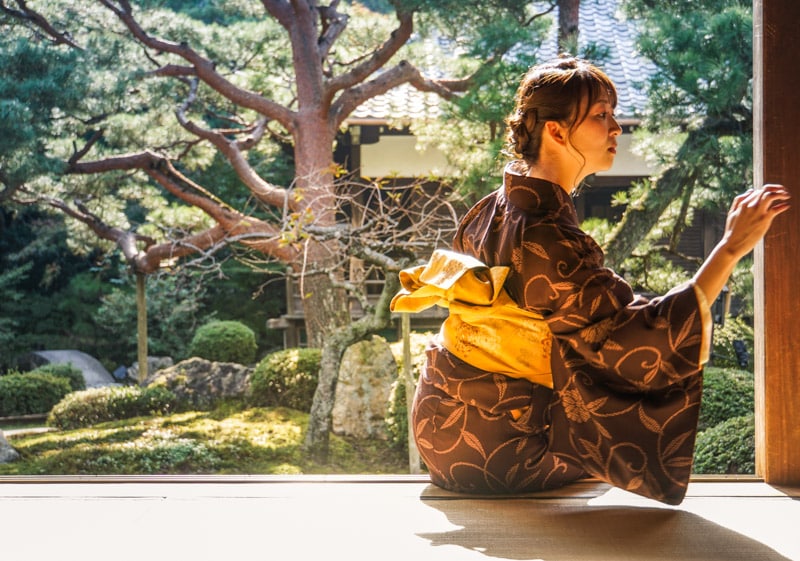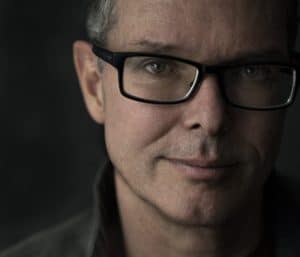
I often have written about concepts practiced within the system of Reiki from a traditional Japanese viewpoint. In this article, I present quotes from Japanese spiritual teachers ranging from Zen to Martial Arts, followed by a small comment/teaching of my own. These point toward and help you see the interconnectedness of these teachings with Mikao Usui’s. This in turn will help you to start to practice and/or teach the system of Reiki from a more traditional Japanese perspective. Also, when we have a clearer intellectual understanding of the practice, we are able to get more out of our practical approach to it. We then can move from simply understanding to truly experiencing our practice.
“When John studied with Takata, he made over 20 audio tapes of her lectures and classes. On one of the tapes she discusses travelling to Japan in order to teach her approach to Reiki. While there, she met some Japanese citizens who were actively practicing and preserving Reiki as they understood in Japan. Takata regarded their approach as entirely valid, but inappropriate for the West. It was highly complex, required years of training and was closely intertwined with religious practices. She felt these factors would deter students in the West and hobble the spread of Reiki through the world at a time when, in her view, it was urgently needed.” – Hand to Hand by John Harvey Gray
– I have opened with this wonderful quote about Mrs. Takata meeting some Japanese citizens who were actively practicing and preserving Reiki. She states that in Japan, the system of Reiki was highly complex, required years of training and was closely intertwined with religious practices. If we look at these old Japanese spiritual teachings to see how they interlink with Mikao Usui, we get a better idea of what he was really trying to practice and teach.
“His [Morihei Ueshiba] goal, deeply religious in nature, is summarized in a single statement: the unification of the fundamental creative principle, ki, permeating the universe, and the individual ki, inseparable from breath-power, of each person. Through constant training of mind and body, the individual ki harmonizes with the universal ki, and this unity appears in the dynamic, flowing movement of ki-power which is free and fluid, indestructible and invincible. This is the essence of Japanese martial arts as embodied in Aikido.” Kisshomaru Ueshiba
– This quote from the founder of Aikido, Morihei Ueshiba, is in line with the teachings of Mikao Usui, as we can see in the quote below from a booklet by the Usui Reiki Ryoho Gakkai. Both point out that we have to train and strive to harmonize/unite our ki with the ki of the universe.
“Strict teachings and rules of Master Usui: One of the most strict rules which he taught us is that your spirit as a small universe has to be always united with the spiritual power of the whole universe as one.” – Reiki Ryoho no Shiori, which is a booklet handed out by the Usui Reiki Ryoho Gakkai.
– But how do we do this? Through consistently meditating on the precepts, symbols, mantras, and practicing the meditation practices like hatsurei-ho. Again the Usui Reiki Ryoho Gakkai notes the importance of meditation:
“Meditation not only makes your spiritual energy stronger but also cures illnesses and helps to get rid of fatigue.” – Reiki Ryoho no Shiori booklet handed out by the Usui Reiki Ryoho Gakkai.
– As you can see, meditation is the key to cultivate and emanate a stronger amount of spiritual energy, of Reiki.
“Meaning of “Reiki”: Energy within oneself, when concentrated and applied to patient, will cure all ailments – it is nature’s greatest cure, which requires no drugs. It helps in all respects, human and animal life. In order to concentrate, one must purify one’s thoughts in words and in thoughts and meditate to let the “energy” come out from within. It lies in the bottom of your stomach about 2 inches below the navel. Sit in a comfortable position, close your eyes, concentrate on your thoughts and relax…” – Excerpt from Mrs. Takata’s diary, Dec 10th 1935
– Like the Japanese teachers above, Mrs. Takata also pointed out that meditation is the key. She also noted that Reiki lies within and at the bottom of the stomach, which is the hara.
“HARA (Jap.) A central area in the lower abdomen from which the breath comes during meditation. The hara is a point of balance and source of ki, or life-force energy.” – Returning to Silence by Zen master Dainin Katagiri
Not only did Mrs Takata point to the importance of the hara, but Mikao Usui did as well. When you look at traditional Japanese meditation practices like joshin kokyu ho and seishin toitsu, you can see that both work with breathing deeply into the hara. Why? Because it is the source of ki – our life force energy.
“Because Reiki Therapy improves self – healing ability by using the spiritual energy coming from your own body, it’s safe and anyone can do it.” – September 1974 Usui Reiki Therapy Association Headquarters Chairman Toyokazu Kazuwa (Reiki Ryoho no Shiori booklet, handed out by the Usui Reiki Ryoho Gakkai.)
– Here the Usui Reiki Ryoho Gakkai also points out that Reiki, spiritual energy, is coming from our own body and that it has to be first of all sought within our own body.
“We humans hold the Great Reiki that fills the Great Universe. The higher we raise the vibration of our own being, the stronger the Reiki we have inside will be.” – note from a student of Mikao Usui supplied by Hiroshi Doi
– So again, we can see that unification process of “I am the universe and the universe is me”, see that Reiki is within us, and that we have to raise our vibration. How do we raise our vibration? Through meditating on the precepts, symbols, mantras, and meditation practices like hatsurei-ho.
“In reflecting on dana paramita [perfection of giving], however, I am reminded that it requires “three kinds of purity.” That is, according to Buddhism, true giving involves the awareness that there is no giver, no gift, and no receiver. Attachments of any kind—whether it be to self as the benefactor, the value of the gift, or the acknowledgment by the receiver—nullify the pure act of giving.” – Taitetsu Unno (1929-2014)
– This corresponds to the way we need to give a treatment and a reiju/initiation/attunement, to the awareness we must cultivate and hold in our heart-mind during these practices and rituals. Mikao Usui pointed this out within his precepts, because true compassion is infused with the three kinds of purity: no giver, no gift, and no receiver.
“Compassion naturally occurs in the state of selflessness.” – Kaji: Empowerment and Healing in Esoteric Buddhism by Ryuko Oda
– This means that if we want to embody the precepts, we have to really be in a state of selflessness, no “I”.
“For the members of our association, please keep this in mind that the more you have a higher virtue in yourself the stronger your spiritual energy becomes .”- Reiki Ryoho no Shiori, handed out by the Usui Reiki Ryoho Gakkai.
– Thus by embodying the precepts, virtues, letting true compassion come out, and by holding the awareness of no giver, gift, and no receiver, our spiritual energy becomes stronger.
“As long as you are involved in dualistic concepts, it is not possible for you to observe our precepts. So how to get out of dualistic concepts and fill our being with gratitude is the point of practice.” – Wind Bell, Teachings from the San Francisco Zen Center.
-This is really the essence of the system of Reiki and a very important element within Mikao Usui’s teachings. To be able to embody the Reiki precepts we need to let go of dualistic concepts, else we cannot observe Mikao Usui’s precepts. Thus we need to let go of ideas and statements like: “this is a higher vibration than that”, “there is this kind of Reiki and that kind of Reiki”, and again, hold in heart-mind no giver, gift, and receiver. Mikao Usui also pointed this out by placing “be grateful” within the precepts, because as the Zen Centre points out, true gratitude helps us to let go of dualistic concepts. Mikao Usui noted this non-involvement in dualistic concepts within the mantras of his teachings as well. For example: Hon Sha Ze Sho Nen 本者是正念 translates as “My Original Nature is Right Mind”. What is Right Mind? Right Mind is non-duality.
“In Sanskrit, the word for “right” is samma. It means “to go along with,” “to go together,” “to turn together.” It originally comes from a term that means “to unite.” So “right” is a state of being in which everything can live together, or turn together, united. Right is a state of human life in which we live in peace and harmony with all other beings. It is right, beyond our ideas of right or wrong, good or bad.” You Have to Say Something: Manifesting Zen Insight by Dainin Katagiri
– Right, as it is pointed out by Zen Master Dainin Katagiri is thus beyond our ideas of right and wrong, good or bad; he is thus also pointing towards non-duality. Therefore we can say that Hon Sha Ze Sho Nen also can be translated as “ My Original Nature is a Non-Dual Mind.”
“The No-Mind is the same as the Right Mind. It neither congeals nor fixes itself in one place. It is called No-Mind when the mind has neither discrimination nor thought but wanders about the entire body and extends throughout the entire self.”
– Zen Master Takuan Sōhō
– Thus Right Mind is the same as No-Mind which in essence is again non-duality. We begin to see it all come full circle as all these teachers of old in Japan pointed towards the same state of mind.
“The Right Mind is the mind that does not remain in one place. It is the mind that stretches throughout the entire body and self. The Confused Mind is the mind that, thinking something over, congeals in one place.” – Zen Master Takuan Sōhō
– What is that confused mind? Mikao Usui pointed this out, it is the mind that is angry and worried. What is the Right Mind? Mikao Usui also pointed that out; it is the mind which is grateful, true to its way and its being, and compassionate. Thus we can start to see that hon sha ze sho nen – my original nature is right mind – also is linked to the precepts.
Looking at traditional Japanese spiritual practices helps us to see what Mikao Usui had in mind and what he was trying to teach us. But most of all it helps us see how to practice. Because it is only through applying on a daily basis the meditation practices Mikao Usui placed in his teachings that we will have a direct experience of what he was trying to point out. If we only intellectualize about it – all thought and no action – it will never be a direct experience. It will be like thinking or reading about a cake and never actually baking it and eating it. Instead, if we consistently develop and follow through in our practice, we can have our cake and eat it too.
….to be continued….


Comments 3
Great and valuable essences here. Thank you for placing them all together.
Thank you Tiberiu,
It is so important to understand the roots of the system of Reiki.
Love
Frans
Thank you. I’m grateful to awake this morning to your clear and thoughtful teaching and reminder of non-duality in Reiki. ✨